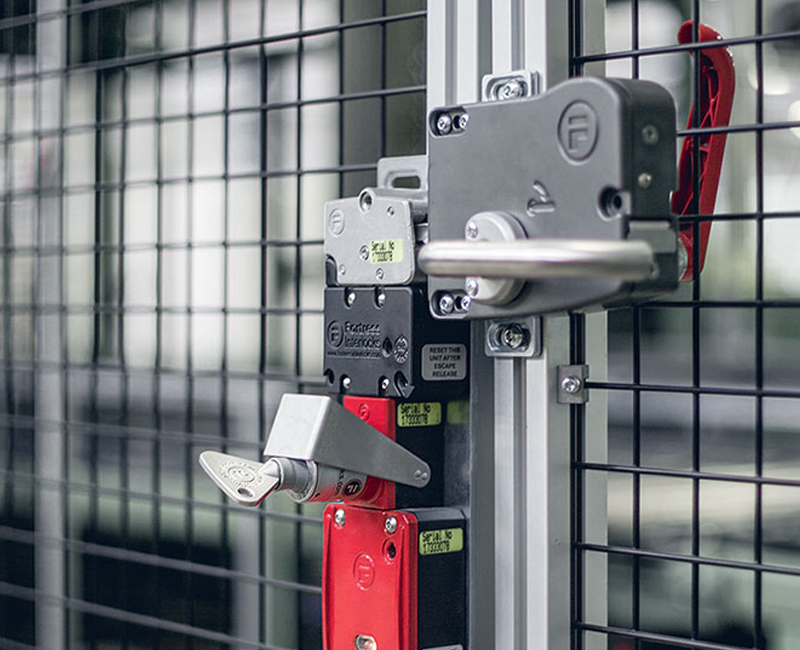VEILIGHEIDSSLEUTEL TEGEN INSLUITING
Safety Key to prevent entrapment hazards
What is an Escape release? EN ISO 14119 defines an Escape release as “the possibility to manually, without aids, release an interlock from inside the safeguarded area to be able to exit.

It needs to be simple to unlock de interlock from the inside of the safeguarded area. You should be able to open the door without the need for tools and regardless of the operation conditions of the installation.
The unlocking of the interlock will issue a stop command. The use of the emergency release can only be possible from the inside of the protected area.
In summary, an emergency release (escape release) ensures that someone who is locked up in a guarded (shielded) environment has the opportunity to leave it and gives an immediate stop-command to the control system.
When is an emergency release required?
EN ISO 14119 writes much less about when an emergency release is required and only states that “depending on the application, additional methods or an emergency release are required”. In practice, this means that it must be included in a risk-inventory whether there is a risk of entrapment. The following factors should be considered:
- Is there a risk of complete entrapment (full body access), which means that you can walk into the area. Or is there a hatch (part body access)?
- Is the guarded area large or small (is it easy to see if someone is in the room?).
- Are there blind spots within the guarded area where someone can hide from view?
But an Escape release does not prevent an accident, does it?
No it doesn’t. An Escape Release will allow someone trapped to get out, but the machine won’t stop until the employee is already at the door (where the escape release is sited) and by that time it is highly likely an accident will occur.
Prevention is better than cure
Safety keys prevent an accident from occurring. Safety keys work by blocking the interlock once the door is opened. Once all safety criteria are met the door will still not open until an employee removes the safety key. In reverse, the door will not relock until the safety key is returned. Thus the operator is kept completely safe whilst the safety key is in their pocket. Many people compare a safety key system to a padlock in a lockout procedure, and given that you cannot reboot until the key is returned, this is true. However, safety keys have two important advantages over a lockout-tagout procedure:
Firstly, the safety key is always at the door, so you can’t forget it and be tempted just to nip inside for 1 minute……..
And secondly, unlike a lockout-tagout procedure, if you don’t remove the safety key the door won’t open, so operators are forced to follow the procedure.
By implementing a safety key system, employees are 100% protected against accidental restarts of installations, where an emergency release only tries to minimize the consequences of an accidental restart.
Safety key prevents restart
Emergency release prevents entrapment
We are
here to help
Contact one of our technical specialists or sales engineers






Request
a meeting
For all your questions about our products and services, please fill in the form below (response within 1 working day).
